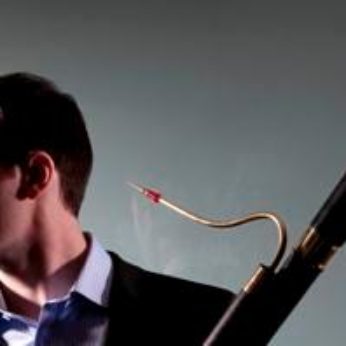Composer: Antonio Vivaldi (b. 1678 - d. 1741)
Performance date: 27/06/2011
Venue: St. Brendan’s Church
Composition Year: c.1720
Duration: 00:09:37
Recording Engineer: Anton Timoney, RTÉ lyric fm
Instrumentation Category:Large Mixed Ensemble
Instrumentation Other: rec, bn, 2vn, va, db, lu, hpd
Artists:
Peter Whelan -
[bassoon]
Barokksolistene (Bjarte Eike [director/violin], Stefan Lindvall [violin], Torbjorn Köhl [viola], Mattias Froftenson [double bass], Fredrik Bock [lute], Hans Knut Sveen [harpsichord]) -
[baroque ensemble]

Dreams, mysteries and nightmares are conjured up and brought to life in the dark musical narrative La Notte, one of Vivaldi’s most engrossingly original compositions. Works bearing the same title appear in no less than three versions by Vivaldi: as a flute concerto, a bassoon concerto, and in this, it’s earliest form, a chamber concerto dating from around 1720. The genre of the chamber concerto gained a rise in popularity in the early 18th century, allowing composers to experiment with the timbres of individual instruments in different combinations. Vivaldi was particularly fond of pushing the limits of the specific potential of each instrument, leading to the discovery of new sounds. As the narration of La Notte unfolds, the bassoon is displaced from its role as a continuo instrument to assume new prominence as a soloist in its own right. Vivaldi presents the work to us in key of G minor, which in rhetorical terms is associated with agitation, fear and revenge, making it a wise choice for this unusual composition. Made up of seven brief and loosely organised movements, La Notte breaks away from the usual ‘fast-slow-fast’ structure of the Baroque concerto. Already in the opening largo, we are presented with eloquent proof of Vivaldi’s unequalled ability to conjure up an atmosphere in just a few bars. The mood of eerie quiet is abruptly interrupted by a presto bearing the sub-title fantasmi (ghosts), and the dream visions continue until deep sleep once again prevails in a largo entitled Il sonno, an abbreviated version of the sleeping drunkards that appear some years later in the Autumn concerto from The Four Seasons. The returning ghosts in the final allegro banish any hope of a tranquil sleep before dawn, and the listeners are left with an inconclusive feeling of unrest, the dark and recent nightmares only just out of memory’s reach.
Copyright © 2025 West Cork Music. All rights reserved.
Designed and developed by Matrix Internet